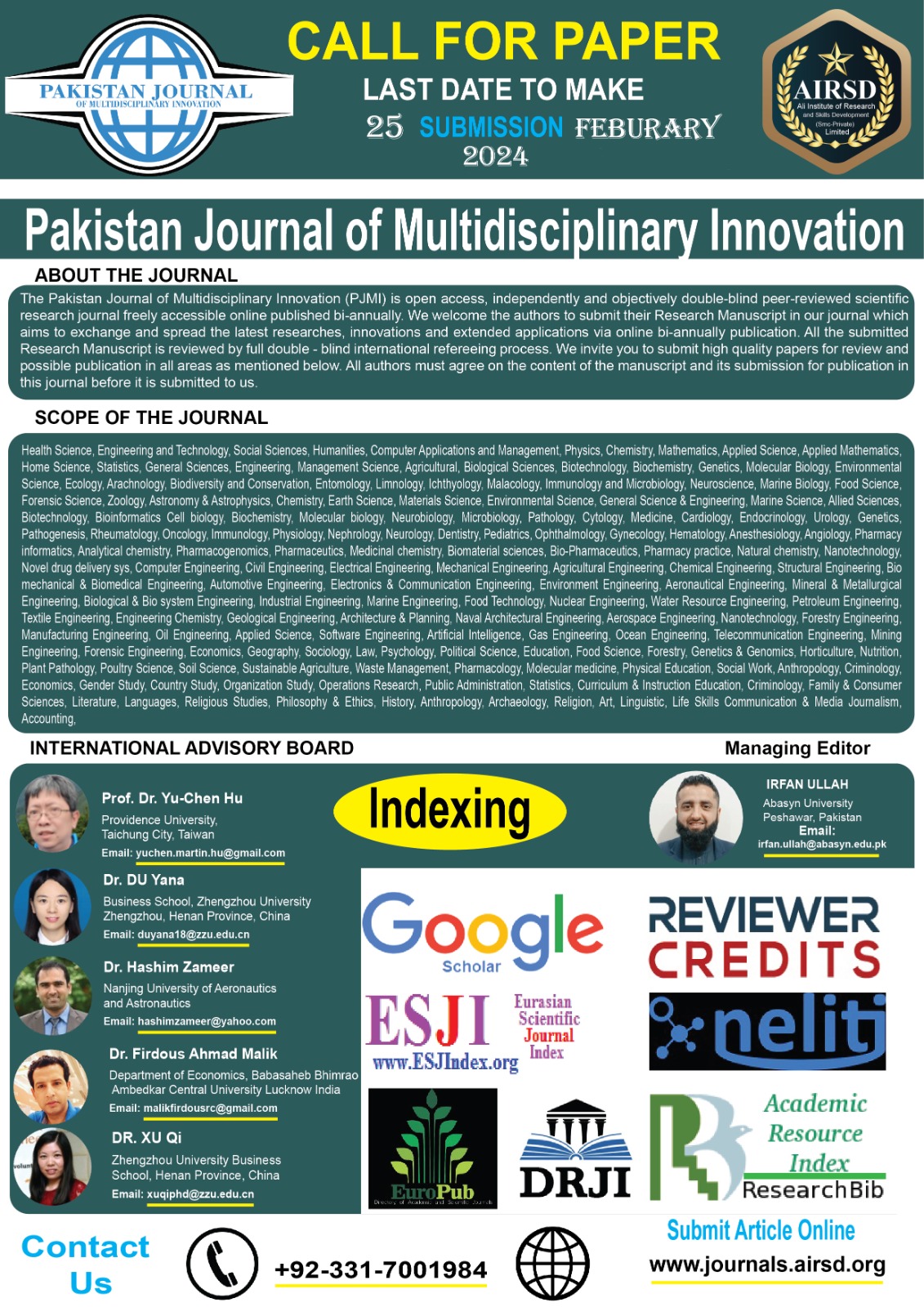Insights into Nitrogen-Wheat Relationships: A Field Perspective Review
Keywords:
Nitrogen; wheat growth; Leaf area index; Photo-synthetically active radiationAbstract
Chlorophyll requires nitrogen as an essential element and metabolic processes to perform fundamental functions. Proteins that support plant essential functions utilize nitrogen as an essential substance to enhance Leaf Area Index (LAI) through better leaf development along with increased leaf expansion rates. Improved PAR (photosynthetic active radiation) interception leads to increased dry matter production as a result of this process. The practice of nitrogen application represents an essential approach used to enhance wheat yield across specific areas of cultivation land. The various plant growth factors which nitrogen (N) affects most notably include square meter tiller number along with spikelet number per spike and grain number per spike and spike length and 1000-grain weight. The increase of crop yield demands nitrogen application through chemical fertilizer. Farm economic sustainability depends on proper nitrogen fertilizer allocation since it enables wheat production enhancement.
Downloads
Published
How to Cite
Issue
Section
License
Copyright (c) 2025 Pakistan Journal of Multidisciplinary Innovation

This work is licensed under a Creative Commons Attribution 4.0 International License.















